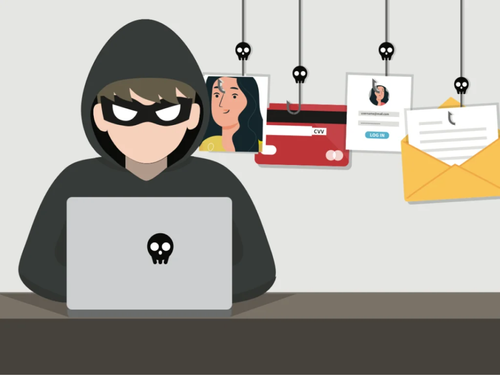In today's digital landscape, where online communication is the norm, email has become a critical part of our lives. Unfortunately, it has also become a favored tool for cybercriminals to perpetrate fraud and scams. This is where fraud email verification comes into play. As an expert in online security, I'm here to provide you with comprehensive insights into fraud email verification, its significance, and how it can help protect you from online scams.
Understanding Fraud Email Verification
Fraud email verification is a process that helps identify and block emails sent by malicious actors or fraudulent sources. It is a vital component of online security and serves several purposes:
Identifying Scammers: Fraud email verification helps identify emails sent by scammers or cybercriminals attempting to deceive individuals or organizations.
Blocking Spam: It can help prevent spam emails from inundating your inbox, reducing the chances of falling victim to phishing attempts or fraudulent schemes.
Ensuring Trustworthiness: By verifying the sender's identity and legitimacy, it helps ensure that the emails you receive are from trusted sources.
The Significance of Fraud Email Verification
Email is a powerful communication tool, but it's also a vector for scams and fraud. Understanding the significance of fraud email verification is crucial for safeguarding your digital world:
Phishing Protection: Fraud email verification helps identify phishing attempts, where scammers pose as legitimate entities to steal personal information.
Malware Prevention: It can block emails containing malware or malicious links that, when clicked, can compromise your device's security.
Financial Security: By verifying the authenticity of emails from financial institutions or online stores, it reduces the risk of falling victim to financial fraud.
The Email Verification Process
Fraud email verification typically involves several steps to determine the legitimacy of an email:
Sender Authentication: The process begins with verifying the sender's identity. This can include checking the sender's domain and verifying that it matches the organization's official domain.
Content Analysis: The email's content is analyzed for suspicious or malicious elements, such as phishing links, malware attachments, or deceptive language.
Blacklisting: Fraud email verification tools often consult blacklists of known fraudulent or malicious email addresses and domains.
Domain Reputation: The reputation of the sender's domain is assessed, with a poor reputation triggering alerts.
Sender Authentication Protocols: Verification tools may use sender authentication protocols like SPF (Sender Policy Framework) and DKIM (DomainKeys Identified Mail) to validate the email's authenticity.
Tools for Fraud Email Verification
Several online tools and services can assist you in verifying the legitimacy of emails and protecting yourself from fraud. These tools check emails for various indicators of fraud, including sender reputation, blacklists, and phishing links.
Some popular tools for fraud email verification include:
QuickEmailVerification: This tool checks email addresses for validity and provides detailed reports on the email's status.
Xverify: Xverify offers an email verification service that can help you identify fraudulent or invalid email addresses.
IPQualityScore: Known for its email validation test, this service checks the validity of email addresses and provides insights into their quality.
Official Sources: When dealing with sensitive emails, always verify their legitimacy through official channels, such as visiting the organization's website or contacting them directly.
Best Practices for Fraud Email Verification
To enhance your online security, consider the following best practices for fraud email verification:
Be Skeptical: Treat unsolicited emails with skepticism, especially if they request personal or financial information.
Verify Links: Hover over links in emails to see the actual URL before clicking. Ensure they lead to legitimate websites.
Use Two-Factor Authentication (2FA): Enable 2FA for your email accounts and other online services to add an extra layer of security.
Report Suspicious Emails: If you receive a suspicious email, report it to your email provider and relevant authorities.
Common Questions About Fraud Email Verification
Let's address some common questions related to fraud email verification to provide you with a comprehensive understanding of this vital topic:
1. Can fraud email verification prevent all types of email scams?
While fraud email verification tools are effective, they may not catch every type of email scam. It's crucial to remain vigilant and employ other security measures.
2. How can I verify the legitimacy of an email from my bank or other trusted sources?
To verify emails from trusted sources, contact the organization directly using their official contact information, rather than relying solely on the email.
3. Are there free fraud email verification tools available?
Some basic email verification tools are available for free, but more advanced features may require a paid subscription.
Conclusion
Fraud email verification is a critical component of online security in our digital age. By understanding its significance, the verification process, and utilizing the right tools and best practices, you can protect yourself from falling victim to scams and fraudulent schemes.
So, take the necessary steps to safeguard your digital world, and embrace the power of fraud email verification to enjoy a more secure online experience. Your online safety is in your hands.



